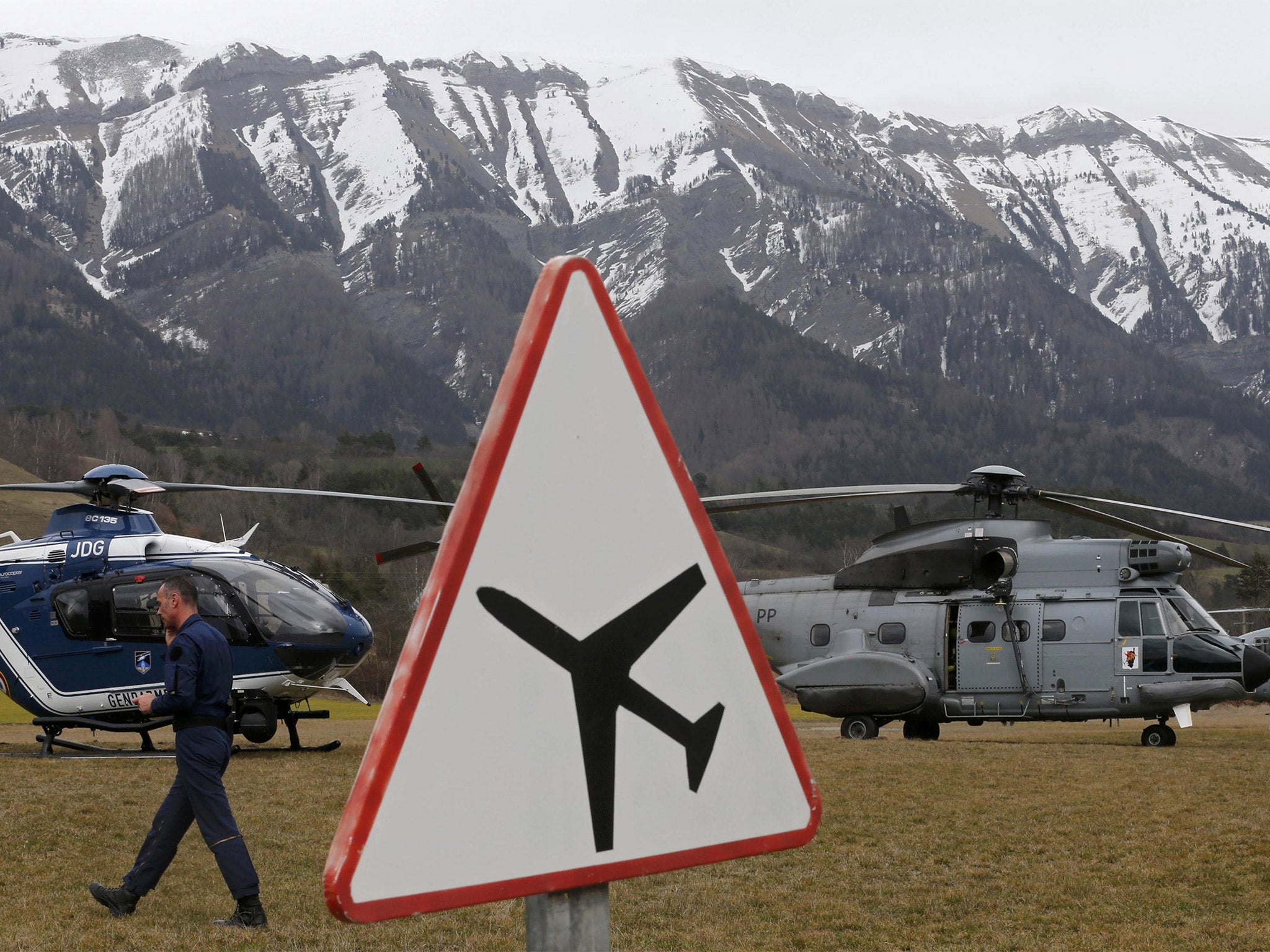Germanwings plane crash in the French Alps: What went wrong on doomed flight 9525?
These are the most likely theories for what caused the disaster

What could have happened to flight 9525? Simon Calder looks at the theories that have emerged since the Airbus A320 jet crashed in the French Alps with the loss of 144 passengers and six crew on a routine flight from Barcelona to Dusseldorf.
How unusual is it for an aircraft to crash when at cruising level?
Very. Until three months ago, Airbus A320 jets had suffered nine fatal crashes - all of them, according to data from AirSafe.com, on the approach or landing. This is the most dangerous phase of any flight, followed by take-off and ascent.
On 28 December, AirAsia light QZ8501 was flying normally over the Java Sea when it crashed in the Java Sea with the loss of 155 passengers and seven crew.
Monday’s crash involved a steep descent from its cruising altitude. It appears to have been controlled, though by the plane’s on-board computers rather than by the pilots.
For one aircraft to crash while at cruising altitude and speed is exceptional. For another to be lost at a similar stage within three months is extraordinary.
Are the two events related?
Only by aircraft type and the coincidence that both are low-cost airlines. The AirAsia event took place in the environs of a tropical storm. Weather does not appear to have been a factor in the Germanwings event.
What seems the most likely theory?
In the early stages following any crash, investigators will keep an open mind. Often, the cause will turn out to be an unforeseen collection of circumstances that combine to cause a disaster. However, a number of pilots and aviation safety experts have postulated that explosive decompression played a part.
The inside of an A320 is pressurised to the equivalent height of about 8,000 feet. When an aircraft is cruising 30,000 feet higher, the air is about 75 per cent thinner - which is impossible for humans to survive for more than a few minutes. The correct drill if there is a decompression - due, for example, to a window popping out or a broken cargo door - is to order the use of oxygen and command a steep descent to around 10,000 feet, at which altitude people can survive without oxygen (although the aircraft interior would, by then, be very cold). If something else intervenes in this process that, for example, prevents the normal flow of oxygen, then all on board would rapidly lose consciousness.
What can we make of the absence of any distress call?
Initially it was reported that the pilots issued a Mayday, but this was later corrected: air-traffic controllers declared an emergency when no contact could be made with the plane. That warned other aircraft to avoid the vicinity.
Every pilot is taught the order of priority during any incident: aviation (keep the plane flying), navigation (work out where you are and where you want to go), communication (let the ground and perhaps other aircraft know your status). It may be that the pilots were so busy on the first two that they had no opportunity to make the call. Or it could be that they were not conscious.
How significant is it that the aircraft continued in the same direction when the descent began?
Possibly very significant. In circumstances where at least one pilot is conscious and is dealing with the need to lose height very quickly, they will naturally fly away from mountains - a 180-degree turn would have placed the aircraft in an area where there are a number of available runways - notably Marseille-Provence airport - and no high ground. That points to neither pilots being able to initiate a turn. Also, standard procedure would be to level off at 10,000 feet for the next phase of dealing with the problem; instead, the aircraft kept flying - and descending - into the mountain.
Could terrorism - or other human intervention - have been the cause?
It seems unlikely, though the passenger list will be scrutinised by security authorities in case there are “persons of interest”. If an explosive decompression had been caused by a bomb that was planted on board, the plane would likely have disintegrated at a much higher altitude; as it was, it was tracked until it was relatively low.
Might anything have been done to save the aircraft?
Not externally. In the Helios flight 522 incident in Greece a decade ago, a military jet made observations of the flight deck of the stricken 737 and saw the first officer slumped over the controls and the captain’s seat empty. Nothing could be done to help the people on board. The Germanwings tragedy may turn out to be a crash with a similar cause.
There have been issues with sensors icing up on Airbus aircraft. Could that have happened?
Possibly. It is believed that ice crystals forming in the air-speed indicator on Air France flight 447 - which crashed into the Atlantic on a flight from Rio to Paris - may have started the chain of events that led to the aircraft’s destruction. There have been reports that on a previous Germanwings flight the angle-of-attack sensors - which basically measure the angle between the wing and the horizontal - may have also iced up, and led to inaccurate data being sent to the on-board computer. But there is no evidence of the pilots seeking to over-ride the automatic systems on flight 9525.
Join our commenting forum
Join thought-provoking conversations, follow other Independent readers and see their replies
Comments